Purging Compounds
Purging compounds to help you improve efficiency, productivity, and quality.
Modern thermoplastics processors like you know that the right purging compound is capable of improving product quality, reducing downtime, and reducing scrap rate, thus saving you time, money, effort, and materials. Though they are often thought of as an optional way to clean your machines, purging compounds present remarkable opportunities for you and your operation.

The most advanced purging solutions are created to do more than simply clean; they are created to not only quickly address, but also prevent process challenges. Thermoplastic processing customers who want to significantly improve their operations choose Chem-Trend purge compounds because they can be 20 times more efficient at color or material changeover than traditional solutions — providing you greater operating efficiency and lower operating costs.
A free sample for your specific application may be available.
Ultra Purge™
The Ultra Purge™ brand of purge compounds continually evolves to address the challenges you face as a thermoplastics processor and is designed to add significant value to your operations. Chem-Trend’s portfolio covers a wide array of process applications, polymers, operating temperatures, and equipment types, allowing for the best match for your specific situation.
Providing class-leading solutions to address challenges you face within your thermoplastic operations, the Ultra Purge™ suite of purging compounds can help you with the following:
- Color change
- Material change
- Scrap reduction
- Black spot (black speck) removal
- Preventative maintenance
Purge Innovation
Designed to improve your operations — and help forward the entire industry — Chem-Trend has introduced an extensive range of purging compounds for a wide variety of applications. With a focus on innovation, sustainability, and your specific needs as a thermoplastic processor, this advanced portfolio of purging compounds includes products that are:
- NSF-registered
- Nonabrasive
- Hot runner safe
- Easy to use
- Value adding
A free sample for your specific application may be available.
Videos
Welcome to our global R&D laboratory and technical center in Maisach, Germany.
R&D virtual tour
A Chem-Trend purging compound can purge all of your biggest frustrations and keep you moving forward.
Why purge compounds
Learn about the viscosity/Melt Flow Index (MFI) of purging compounds used in thermoplastics operations.
recognize the MFI
Learn how to use production of parts as a means of purging your injection molding machine.
Purging via part production
Get the right technique for using purging compounds for smooth operations.
Purging screw & barrel
NEWS
RELATED THINKING
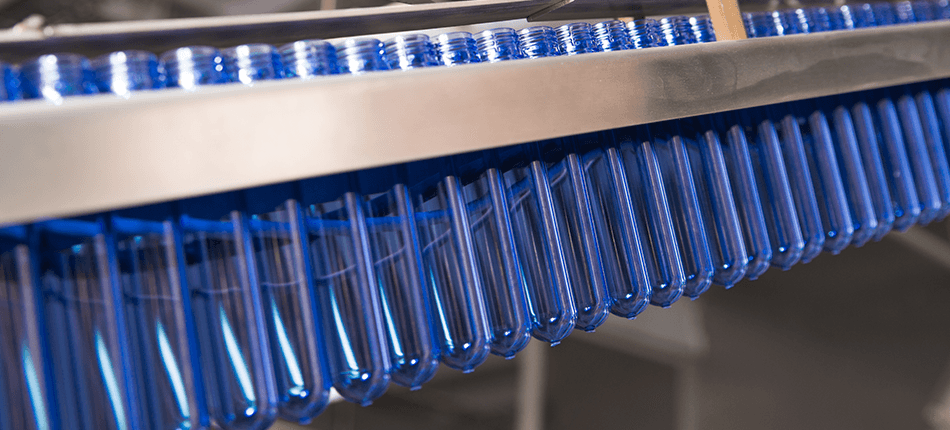
PET Packaging Aids for the Food Processing Industry
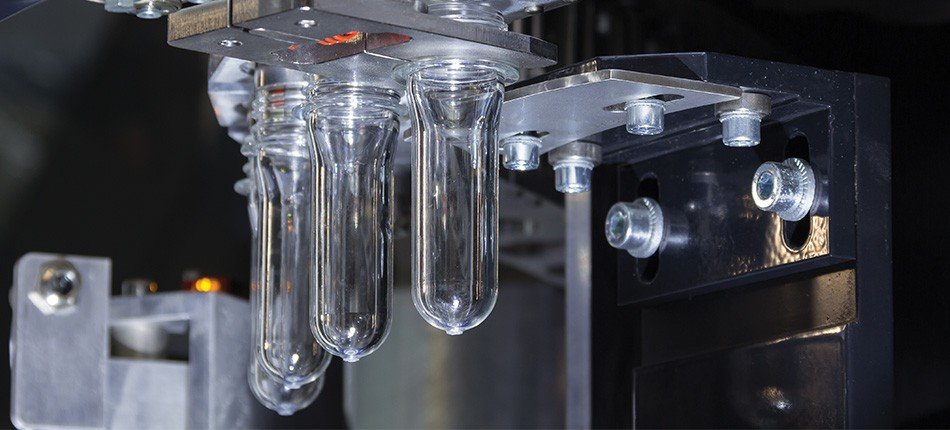
PET preforms moulder achieves higher supplier rating using Ultra Purge™ 5160
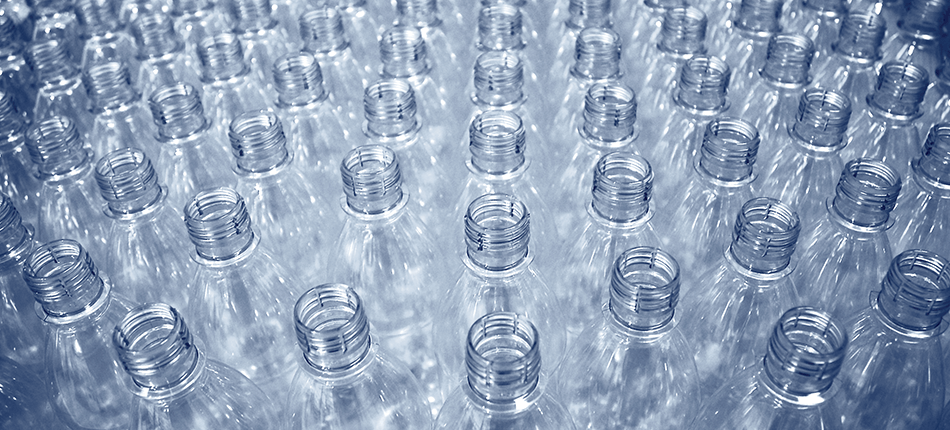
Minimising Blockades in PET Bottle Manufacturing Lines
BROCHURES
Catalogue – Ultra Purge™ Purging Compounds for Food & Healthcare Applications
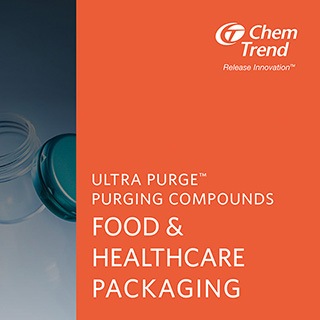
High output rates, weight reducing trends in the packaging market, and food contact requirements are challenging topics. The Catalogue of Ultra Purge™ purging compound for food & healthcare packaging features purge solutions that solve typical challenges in the production of caps and closures, preforms, thin wall containers, cosmetic tubes, blow moulded containers and blown & cast films.
Catalogue – Ultra Purge™ Purging Compounds for Technical Components Applications
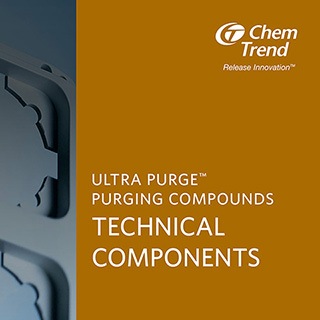
Whether talking about specific screw removing solutions, removal of severe contamination when processing conductive polymers, or quick colour change in food approved transparent copolyester, Ultra Purge™ purging compounds are available to support thermoplastic processors.
Catalogue – Ultra Purge™ Purging Compounds for Special Applications
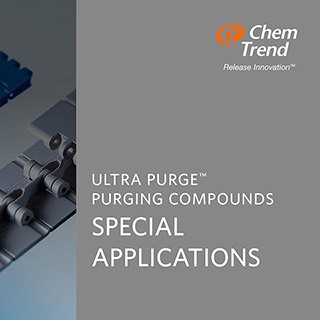
Whether talking about specific screw removing solutions, removal of severe contamination when processing conductive polymers, or quick colour change in food approved transparent copolyester, Ultra Purge™ purging compounds are available to support thermoplastic processors.
Catalogue – Ultra Purge™ Purging Compounds for Extrusion Applications
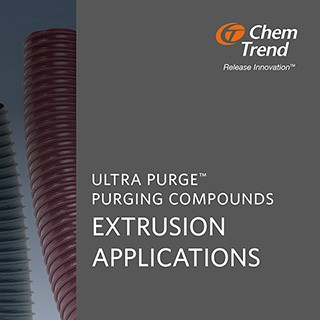
The Catalogue of Ultra Purge™ purging compounds for extrusion applications features solutions to address specific challenges in the manufacture of pipes & profiles, blow moulded containers, and sheet & film. On-the-fly, stops & restarts, no-residue grades are just some of the keywords worth being mentioned.
Catalogue – Ultra Purge™ Purging Compounds for Automotive Applications

The Catalogue of Ultra Purge™ purging compound for automotive applications features purge solutions to manufacture high quality interiors & exteriors as well as lighting. Typical challenges such as avoiding streaks on PMMA or quick colour changes are solved by Ultra Purge™ purging compounds.
FAQs: Purging compounds for injection moulding and extrusion in thermoplastics processing
What positive effects on production do specialized purging compounds provide? What are the different types of purging compounds available in the market? You can find the answers to these and even more questions in our FAQs.
FAQ
Some specialized purging compounds have been developed to cover a wide window of processing temperatures. In cases of extreme temperature difference a tailored solution may be required and you should check with the technical experts of the purge compound supplier to see what solution might be offered.
Dedicated purging compound grades are especially developed for the cleaning of colours, removal of carbon residues and shut down of machines processing transparent polymers such as PS, SAN, PMMA, PET, and PC. Their formulations show good cleaning effect and quick evacuation when the purge process is completed.
The use of a specialized purging compound can be tremendously helpful in reducing the amount of time and material required to clean a machine from color and polymer contamination or material degradation. They are the best solution for transitioning between incompatible polymers and polymers with a wide processing temperature difference. They can also solve contamination issues when the polymer is transparent, and when changing colors — especially when hot runner molds are used in injection molding facilities. The use of specialized purging compounds results in saved time and money.
Yes. Purge compounds for extrusion are generally more viscous compared to polymers used in injection moulding. Purge compounds for injection moulding applications are generally designed to clean more fluid polymers. Purge compounds specially designed for the type of process they are intended to be used in will provide the best results.
Yes. Various factors such as temperature and application time have an influence on the cleaning result. These factors need to be taken into consideration when selecting and utilizing a purging compound. Purge compounds specially designed for the temperature range they are intended to be used in will provide the best results.
There is no direct answer to this question because it depends on a wide variety of issues. Some of the factors that feed into this are things such as; the contamination of the machine, the reason for purging, the kind of purging compound that is used, the end product being molded and end customer requirements/specifications.
However, the Ultra Purge™ purge compounds were tested in cooperation with Fraunhofer IVV for recyclability. When blended up to 5% (by weight) in compatible and incompatible polymers, Ultra Purge™ purging compounds did not alter the physical or chemical properties of the resulting polymer mixture. Nevertheless, suitability tests must be carried out by the
customer to confirm that the use of recycled purging compound does not create manufacturing or quality issues. Please note that neither Fraunhofer IVV nor Chem-Trend will accept any warranty or guarantee for the usability, or liability for damages resulting from the use, of any processing remainders of Ultra Purge™.
Not all purging compounds are safe for use in hot runner systems, screen packs, melt pumps and extrusion dies. However, there are some purging compounds that have been developed for such applications. A “mechanical” type purge compound can damage hot runner systems and other components. If you wish to also purge the hot runner, screen pack melt pump or extrusion die you should only use chemical reaction based purge compounds.
Polymer contamination/carbonization, additives, encrustations, degraded material, or color residue from “dirty” equipment can be released by utilizing one of our highly specialized Ultra Purge™ purging compounds. However, it is important to keep in mind that the more contamination, or dirt, there is in the machine the longer it will take to evacuate. In many instances the contamination or dirt has built up over an extended period of production runs. Therefore, it will take some time to clear out all of the contamination that has settled into the machine.
Thermoplastic processing is done in many different ways with many different polymers, within a wide range of processing temperatures. Universal purging compounds are available on the market, and they do provide benefit in very limited applications. However, universal purging compounds are compromised solutions, and are not the best solution for the majority of operations. Universal purging compounds are effective only on polymers compatible with their matrix and MFI and less effective on incompatible polymers and/or with very different matrices. When transitioning between two incompatible polymers, two differing MFI ranges, or two different matrices, it is best to use a specialized purge compound.
Some polymers tend to produce more thermal cracking, cross-linked residues and encrustations than others. These materials can be particularly hard to clean from a machine. Specialized purging compounds have been developed specifically for these polymers.
Cycles of purge depend on the complexity of material, number of colors processed, additives and processing parameters. Beyond using a purge compound when transitioning from one color or material to another, using a specialized purge compound could also be beneficial in the case of unexpected production events. One common example is when an operator has missed setting the proper processing temperature of a heat-sensitive polymer for too long of a time.
Preventative maintenance of screws, barrels, and hot runner systems, through regularly scheduled and consistent purging, makes sure that they stay in clean condition, reducing carbon buildup. A general rule of thumb is one purge per week. If shutdowns are performed, purge should be used during every shutdown.
Yes, this typically happens when a heavily contaminated machine is purged with a specialized purging compound, especially when the machine has a lot of carbon residue trapped in it. The specialized purge compound will loosen colors used in previous production runs as well as carbon buildup that has been stuck inside the machine. Frequent use of a specialized purging compound will drastically clean the machine and reduce the scrap rate. The benefits of the specialized purging compound will quickly become apparent.
With respect to sustainability, purging with virgin material is the worst approach. Compared with purging compounds, the cleaning performance of virgin polymers is poor, and the amount of scrapped material, time, and energy consumption is significantly higher. Using specialized purging compounds saves considerable time and energy between the last quality part produced in previous resin or color and the first quality part following. Using a specialized purging compound on machines typically purged with virgin polymer often evacuates several previously processed colors. This is due to the limited cleaning performance of virgin polymers.
Ultra Purge™ grades are developed to cover a wide window of processing temperatures. In cases of extreme temperature difference, we may propose to use a combined system for cleaning. Chem-Trend has also developed a special formulation to allow for quick polymer change from high temperature PC to PMMA even if it is transparent.
There are two major classes of purging compounds in the market. One is referred to as mechanical or abrasive purging compounds. These are compounds where the cleaning process is based on the mechanical action of hard particles, e.g., glass fibers. The other type of purging compounds is chemical purging compounds. With these, the cleaning process relies on chemical additives that initiate some form of chemical reaction. A third, less commercially available category, typically called a hybrid, is a combination of mechanical and chemical characteristics. The supply form of purging compounds can be either ready-to-use, where the product can be used directly from the package, or a concentrate which is then typically combined with some type of resin at the production facility before being used.
Abrasive purging compounds provide fast and reasonably effective cleaning, but they can also damage screws and cylinders/barrels. It is dangerous to use them in hot runner systems, through screen packs or melt pumps. Abrasive purging compounds are more difficult to evacuate from the machine, creating greater potential for longer-term damage as well as for production-run contamination and scrap creation.
Chemical purging compounds are safer for the equipment and may also be processed through screen packs and melt pumps. They are universally usable in hot runner systems and can be injected in cavities when a purge compound with an appropriately suitable MFI is selected. Because they are safer for the equipment, they are also more suitable for using as part of a preventative maintenance program as opposed to only as a “problem-solving product.”
More recently, hybrid purging compounds, combining the efficiency of a mechanical cleaning with the thoroughness of chemical cleaning, have been developed. Purging concentrates allow for easier storage, but hold the potential risk of incorrect dosage and feeding issues.
The most efficient way is to use purging compounds in a preventative maintenance program. Purging the machine on a regular basis or at least at every shutdown provide the best long-term results. By doing so, severe buildup on the screw, barrel, hot runners and extrusion dies can be avoided, resulting in less production stoppages, machine downtime, and material waste.
A well-selected purging compound that matches with your process and polymer can provide extensive production benefits, including time savings (shorter color and material changeover times), material savings, fewer rejects, lower scrap, higher productivity and quality, positive long-term effects on machine cleanliness, and less wear and tear on machine components. Using specialized purging compounds provides you with improved machine utilization time and less waste.
